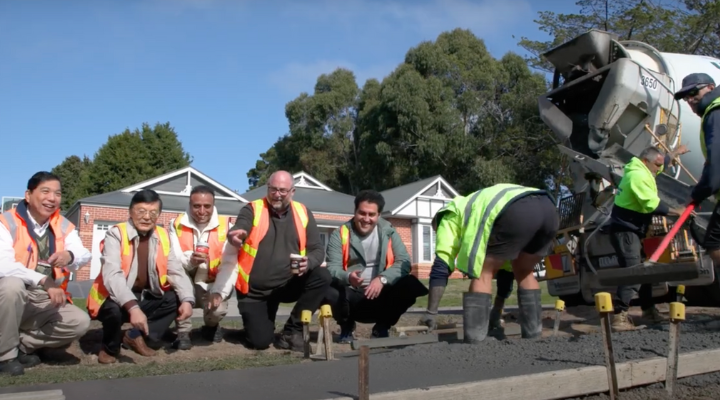RMIT University and Macedon Ranges Shire Council have partnered to work on a pioneering project to implement coffee-infused concrete footpaths in Victoria.
The initiative aims to repurpose used coffee grounds into biochar, a valuable resource for the construction industry. It is also part of a broader effort to minimise organic waste sent to landfill and reduce greenhouse gas emissions.
Dr Rajeev Roychand from RMIT said the impact of this project is significant, as the country generates 75 million kilograms of ground coffee waste yearly.
“Most of it goes to landfill, but it could replace up to 655 million kilograms of sand in concrete because it is a denser material,” Dr Roychand said. “Globally, 10 billion kilograms of spent coffee is generated annually, which could replace up to 90 billion kilograms of sand in concrete.”
He explained that the team developed a technique to make concrete 30 per cent stronger by using coffee biochar made with a low-energy process without oxygen at 350 degrees Celsius.
“This approach gives spent coffee grounds a ‘double shot’ at life and reduces waste going to landfill,” Dr Roychand explained.
The researchers will evaluate the concrete performance in the trial footpaths in Gisborne to support further rollout.
“We are currently working in the supply chain sector to make this research into a mainstream product for commercial applications, and we’re not only looking into coffee – we’re expanding this into all forms of different organic waste,” he added.
If this innovation can be integrated into the supply chain, the potential cost savings for construction companies and concreters are considerable.
Shane Walden, the council’s director of assets and operations, expressed enthusiasm for the initiative.
“It’s really important for the Council to be involved in projects like this and to work closely with universities such as RMIT,” Walden said. “This not only helps improve the knowledge level of our contractors and our staff, but also has many other important benefits to our community.”
This story first appeared on our sister publication Inside FMCG












